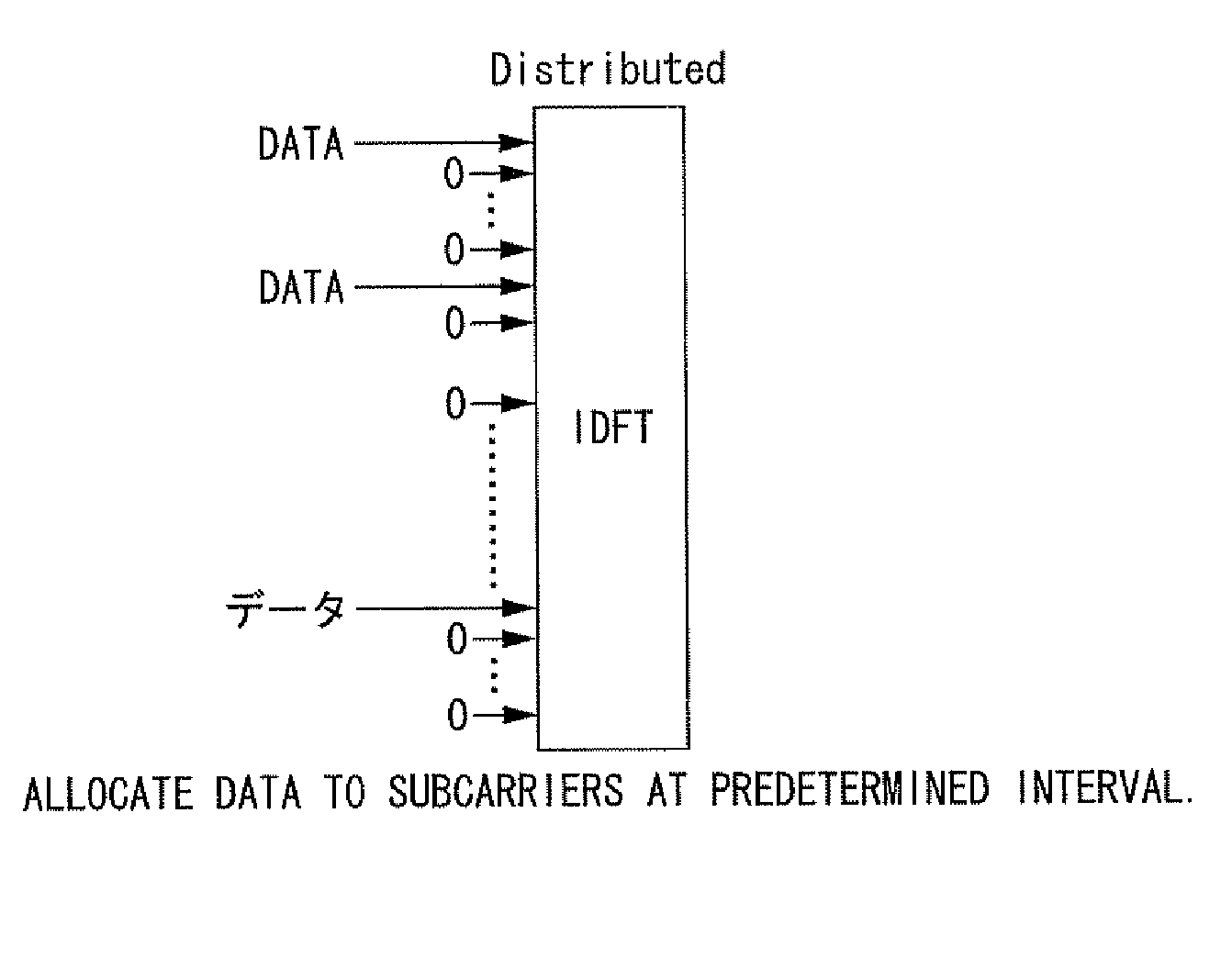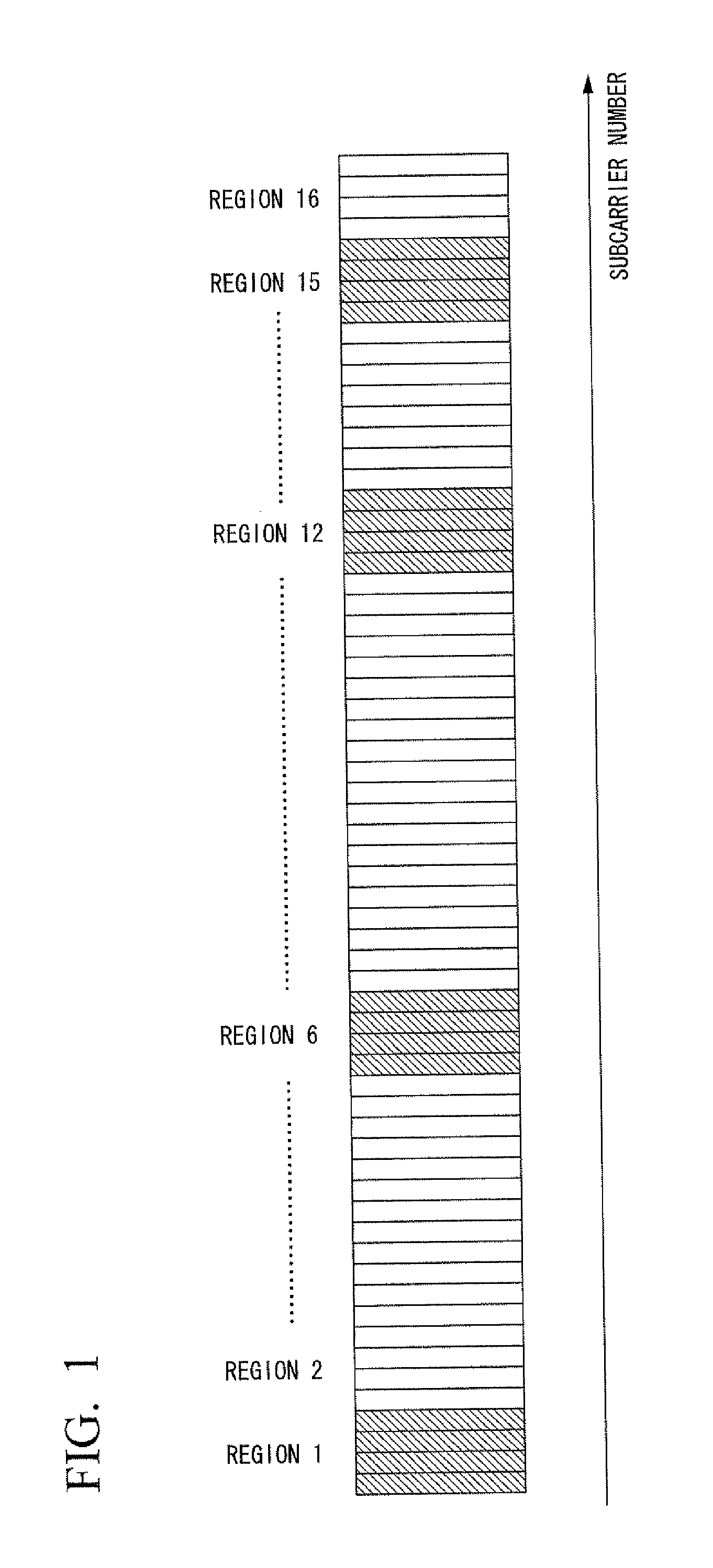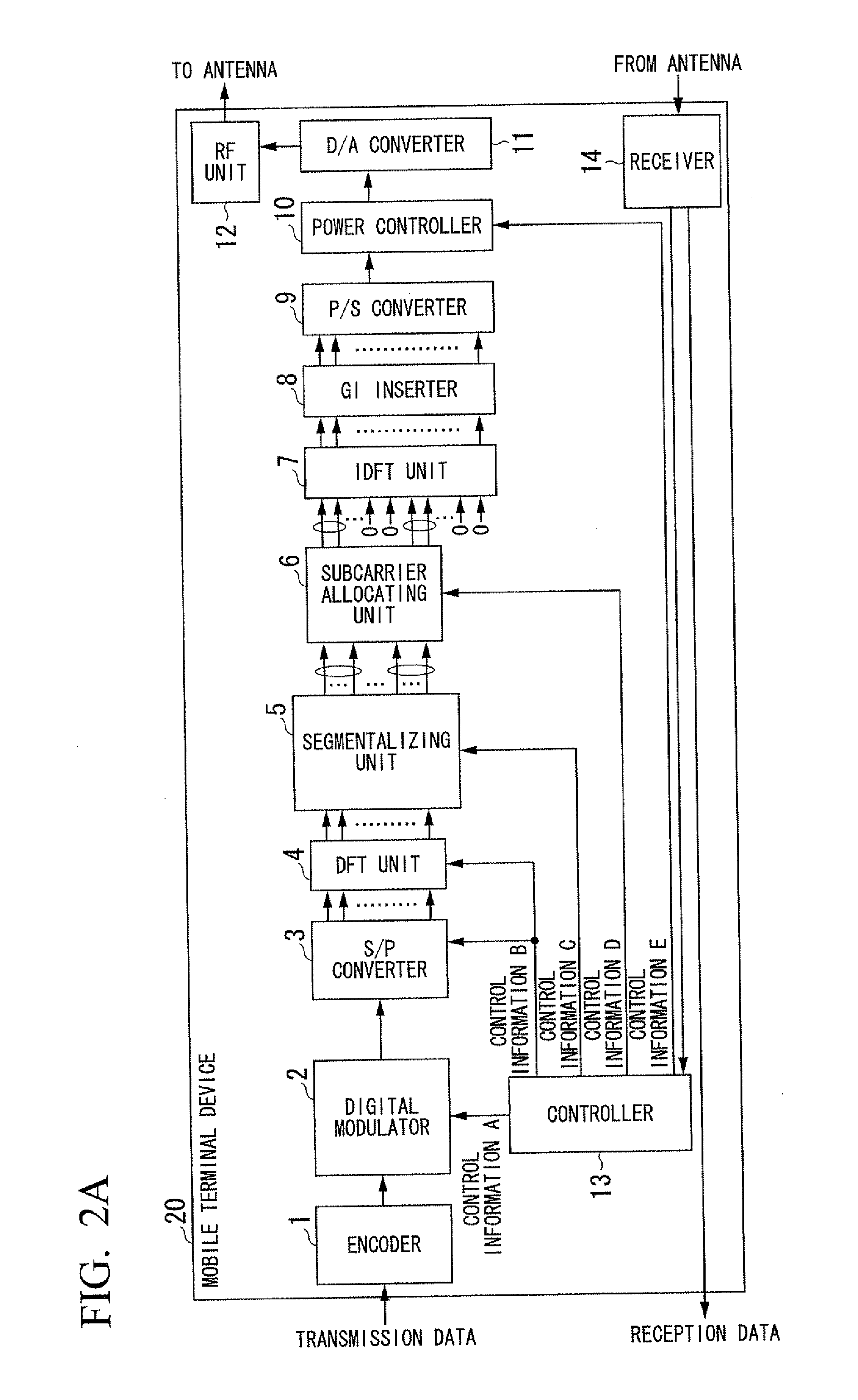Wireless communication system, wireless transmission device, wireless communication method, and program
a wireless communication and wireless transmission technology, applied in the field of wireless transmission devices, wireless communication methods, wireless communication systems, etc., can solve the problems of insufficient performance, scheme selection of optimal subcarriers for communication, relative low transmission power amplifying performance, etc., and achieve excellent communication efficiency and excellent papr characteristics.
- Summary
- Abstract
- Description
- Claims
- Application Information
AI Technical Summary
Benefits of technology
Problems solved by technology
Method used
Image
Examples
first embodiment
[0077]A first embodiment explains the adaptive control achieved by changing the number of frequency domain signals included in each segment. For simplification of explanation, it is assumed that the control information A indicates one of BPSK and QPSK, and the control information B indicates 32 subcarriers that do not change (the total number of subcarriers to be used is 64). Additionally, the control information D, i.e., subcarrier allocation is suitably selected based on the number of frequency domain signals included in each segment, as will be explained later. It is assumed in the first embodiment that the base station device 30, which is the transmission destination of the mobile station device 20, informs the mobile station device 20 of an SINR of each subcarrier. Although it is explained here that the controller 13 of the mobile station device 20 determines subcarriers to be used, the base station device 30 may determine subcarriers to be used and inform the mobile station de...
second embodiment
[0092]A mobile terminal device and a base station device that are used in a second embodiment are the same as ones explained in the first embodiment with reference to FIGS. 2A and 2B except for the following. In other words, the control information pieces C and D, which are output from the controller of the mobile terminal device, differ. Consequently, the configuration of the controller 13 is changed with this respect. The same can apply to the base station device. This situation is explained here. The second embodiment explains a different method from that of the first embodiment where parameters shown in Table 1 are selected. Therefore, the total number of subcarriers to be used can be selected from 64 (full), 32 (half), and 16 (quarter). A first modulation scheme can be selected from 16QAM, QPSK, and BPSK. The number of frequency domain signals included in each segment can be selected from the types shown in Table 1, i.e., from LS-1, LS-8, LS-16, LS-32, and LS-64. An isolated ce...
third embodiment
[0100]A mobile terminal device and a base station device that are used in a third embodiment are the same as those explained in the first embodiment with reference to FIGS. 2A and 2B except for the following. In other words, the control information pieces C and D, which are output from the controller of the mobile terminal device, differ. Consequently, the configuration of the controller 13 is changed in this respect. The same can apply to the base station device. This situation is explained here. The third embodiment explains a case where DFT-s-OFDM, in which adaptive control is performed, is used for a single frequency reuse cellular system. The single frequency reuse cellular system is a system in which the same frequency band is used by every cell, and therefore high frequency utilization efficiency can be achieved, but the effects of interference signals from neighboring cells are problematic. In other words, interferences are primary factors of SINRs in the system.
[0101]To exp...
PUM
 Login to View More
Login to View More Abstract
Description
Claims
Application Information
 Login to View More
Login to View More - Generate Ideas
- Intellectual Property
- Life Sciences
- Materials
- Tech Scout
- Unparalleled Data Quality
- Higher Quality Content
- 60% Fewer Hallucinations
Browse by: Latest US Patents, China's latest patents, Technical Efficacy Thesaurus, Application Domain, Technology Topic, Popular Technical Reports.
© 2025 PatSnap. All rights reserved.Legal|Privacy policy|Modern Slavery Act Transparency Statement|Sitemap|About US| Contact US: help@patsnap.com



